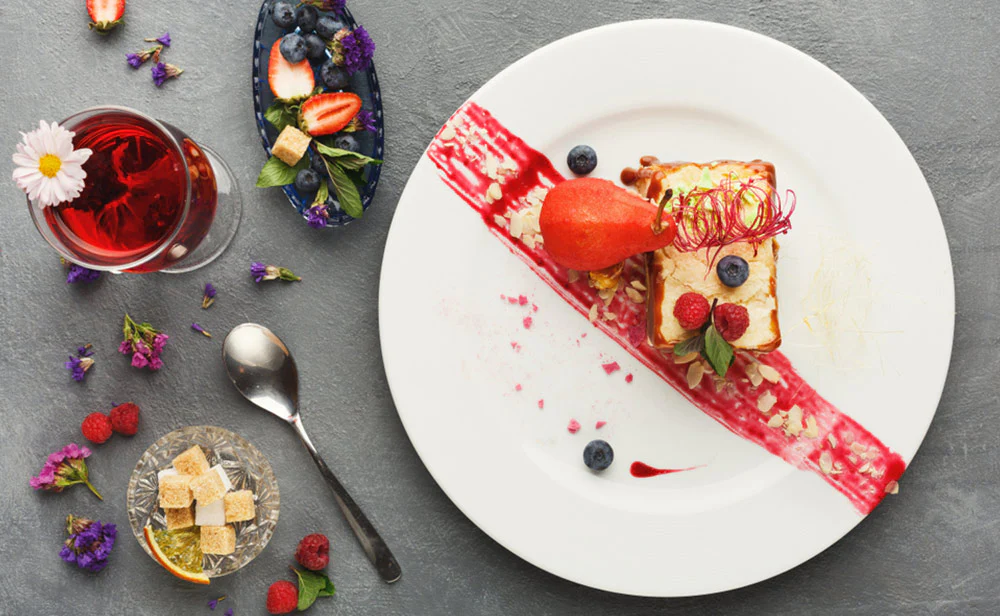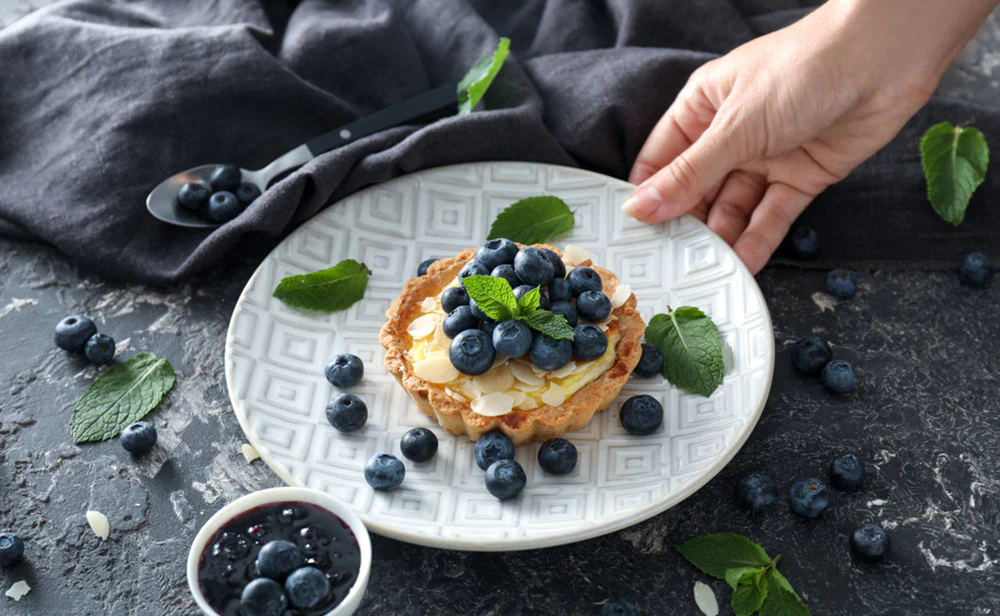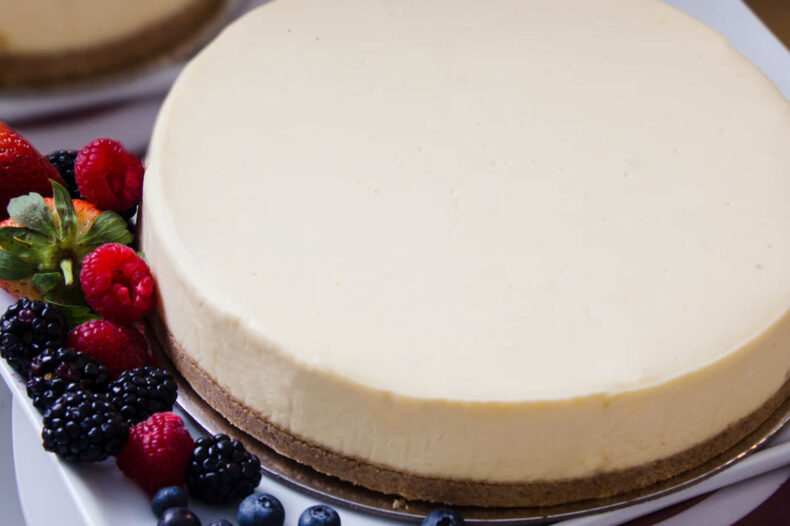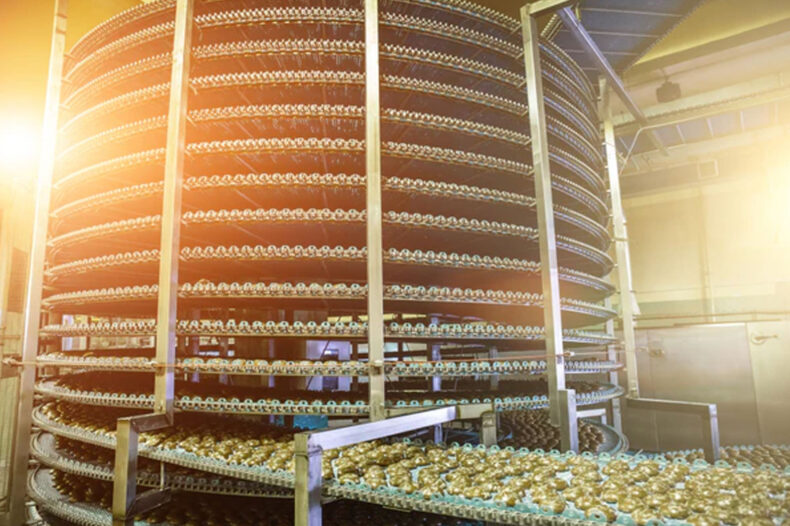Three Essentials of Dessert Presentation
Making desserts look good requires that the pastry chef pay careful attention to all of his or her tasks. To create attractive plated desserts, the chef should observe three basic principles. Note that only the third one concerns the actual design of the plating.
1. Good Basic Baking and Pastry Skills
A pastry chef cannot make superior plated desserts without having mastered basic skills and techniques. Individual components must be properly prepared. If puff pastry doesn’t rise evenly and well because the chef hasn’t mastered correct rolling-in techniques, if cake layers have poor texture because of incorrect mixing methods, if a slice of cake is poorly cut, if sauces have poor texture, or if whipped cream is overwhipped and curdled, then no fancy plate design will correct those faults.
2. Professional Work Habits
Plating attractive and appealing desserts is partly a matter of being neat and careful and using common sense. Professionals take pride in their work and in the food they serve. Pride in workmanship means that chefs care about the quality of their work, and do not serve a dessert they aren’t proud of.
3. Visual Sense
Beyond being neat, effective dessert presentation depends on a thorough understanding of the techniques involving balance of colors, shapes, textures, and flavors, and learning how to arrange the dessert, garnish, and sauce on a plate to achieve this balance.
In recent years, chefs have devoted more of their creativity to the arrangement of food on the plate. This is something of a change from earlier decades, when much of the plating of foods in elegant restaurants was done by the dining room staff at tableside.
This trend has extended to the service of desserts as well. A piece of pastry or a wedge of cake that was at one time served by itself on a small dessert plate is now likely to be served on a large plate with a sauce and one or more items of garnish.
A pastry chef may devote as much attention to the appearance of a plated dessert as he or she gives to the decoration of a cake or the assembly of a large pastry for the display case or retail counter.
The art of the plated dessert is a fairly new aspect of the pastry chef’s craft. Until recently, desserts in fine restaurants were presented on a pastry cart and plated by the dining room staff, or else they were plated very simply in the kitchen, again by the dining room staff or, sometimes, a pantry cook.
Modern Times
Today, many restaurants—not just the finest establishments, but even casual neighborhood spots—proudly display the names of their pastry chefs on their menus. Dessert menus are likely to be printed separately instead of appearing at the bottom of the main menus. Desserts, prepared by a high-profile pastry chef, are seen as products that will increase the check average and draw public attention to the restaurant and the creativity of the kitchen, thus bringing in more customers.
Plating styles have changed noticeably in a few short years. Many of the pastry chefs who were pioneers in this area created complex architectural assemblies that were impressive and beautiful to look at but difficult to eat. Diners were fascinated but found they had to take the construction apart in order to begin to eat it. Often, chefs added to the complexity by decorating the rims of the plates with squirts of sauce or sprinklings of cocoa powder or 10X sugar, which was likely to end up on the sleeves of diners’ clothing. Gradually, pastry chefs began to shift their focus back to flavor, discovering that they could make great-looking and great-tasting desserts without building towering constructions.
An important factor in the development of plating styles is the way pastry chefs and kitchen chefs work together as a team to shape the culinary identity of the restaurant. Dessert menus are treated as continuations of the dining experience, not simply as an unrelated sweet course tacked on at the end. The pastry chef’s work complements and harmonizes with the hot food in plating styles as well as in ingredients and flavors.
Dessert Plating Styles
Dessert plating styles are constantly changing and evolving, thanks to today’s creative pastry chefs. There are many opinions on what makes a successful presentation, and chefs have thought and discussed and written a great deal about this subject. There is much disagreement, of course. When chefs try to develop an individual style to showcase their talents, the result is more variety to attract and satisfy customers. Because pastry chefs do not always agree on how best to present a dessert, it is impossible to set down a list of hard-and-fast rules to follow. But we can discuss a number of ideas that influence chefs in their decisions and some of the factors pastry chefs consider when planning a dessert menu.






